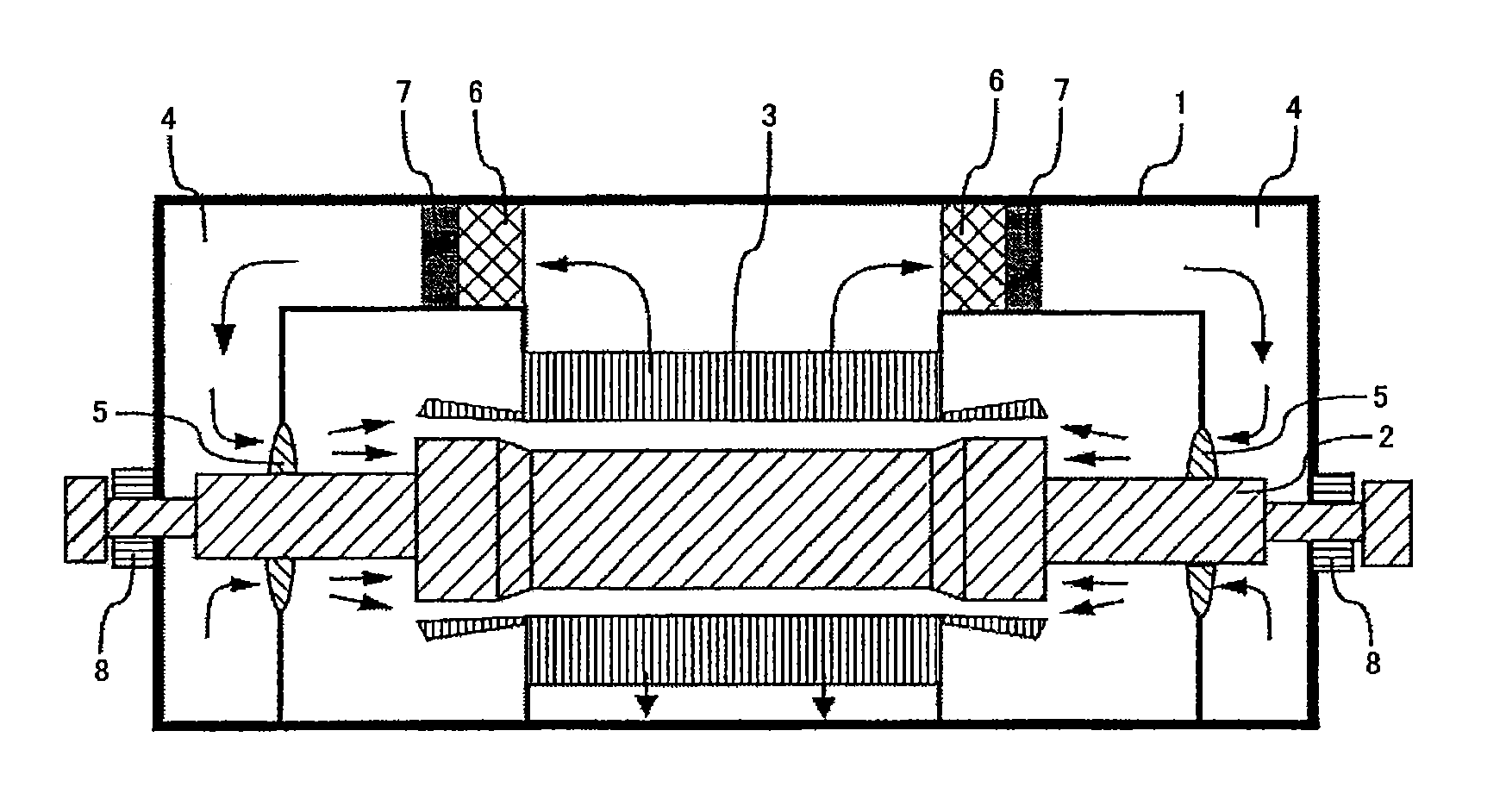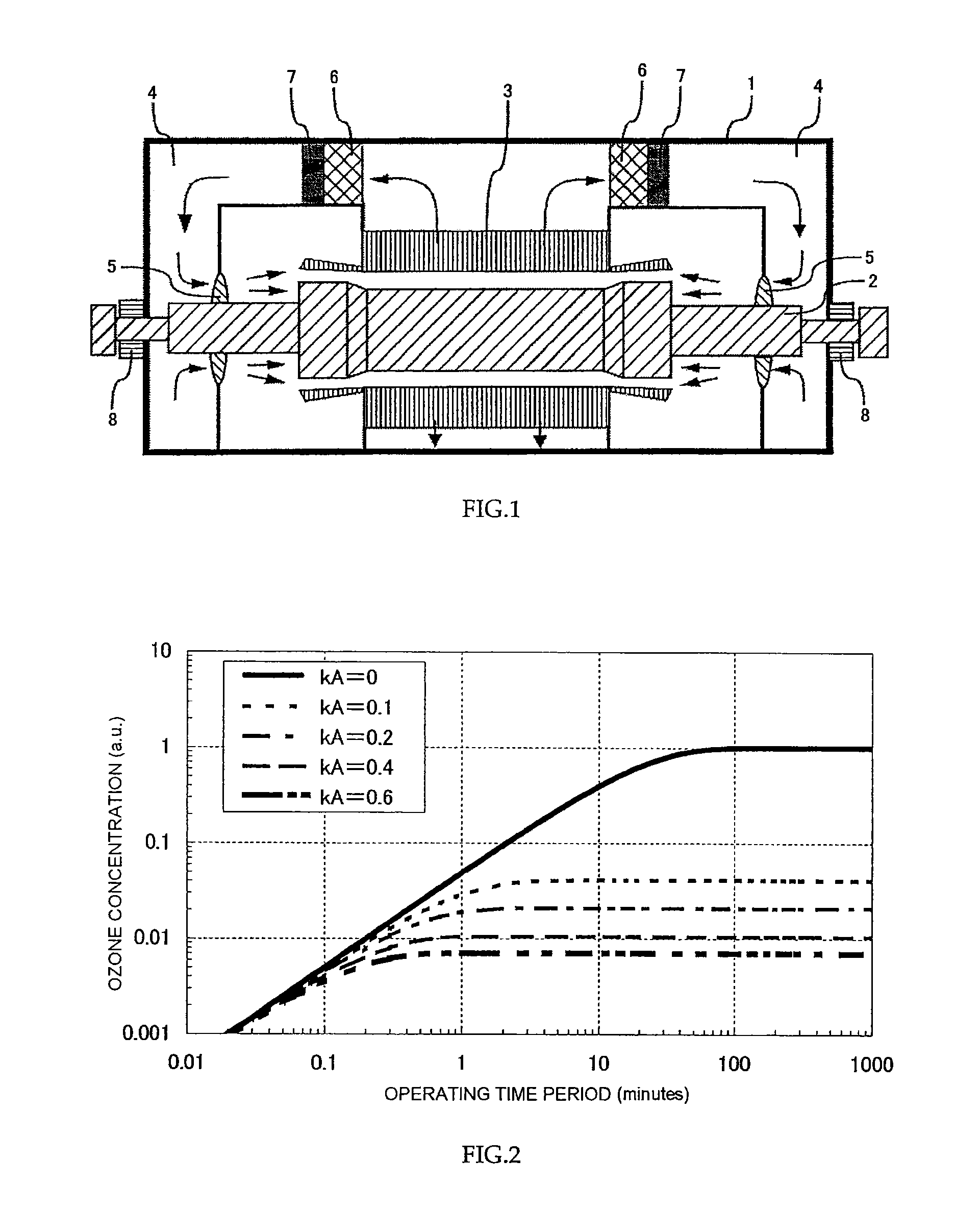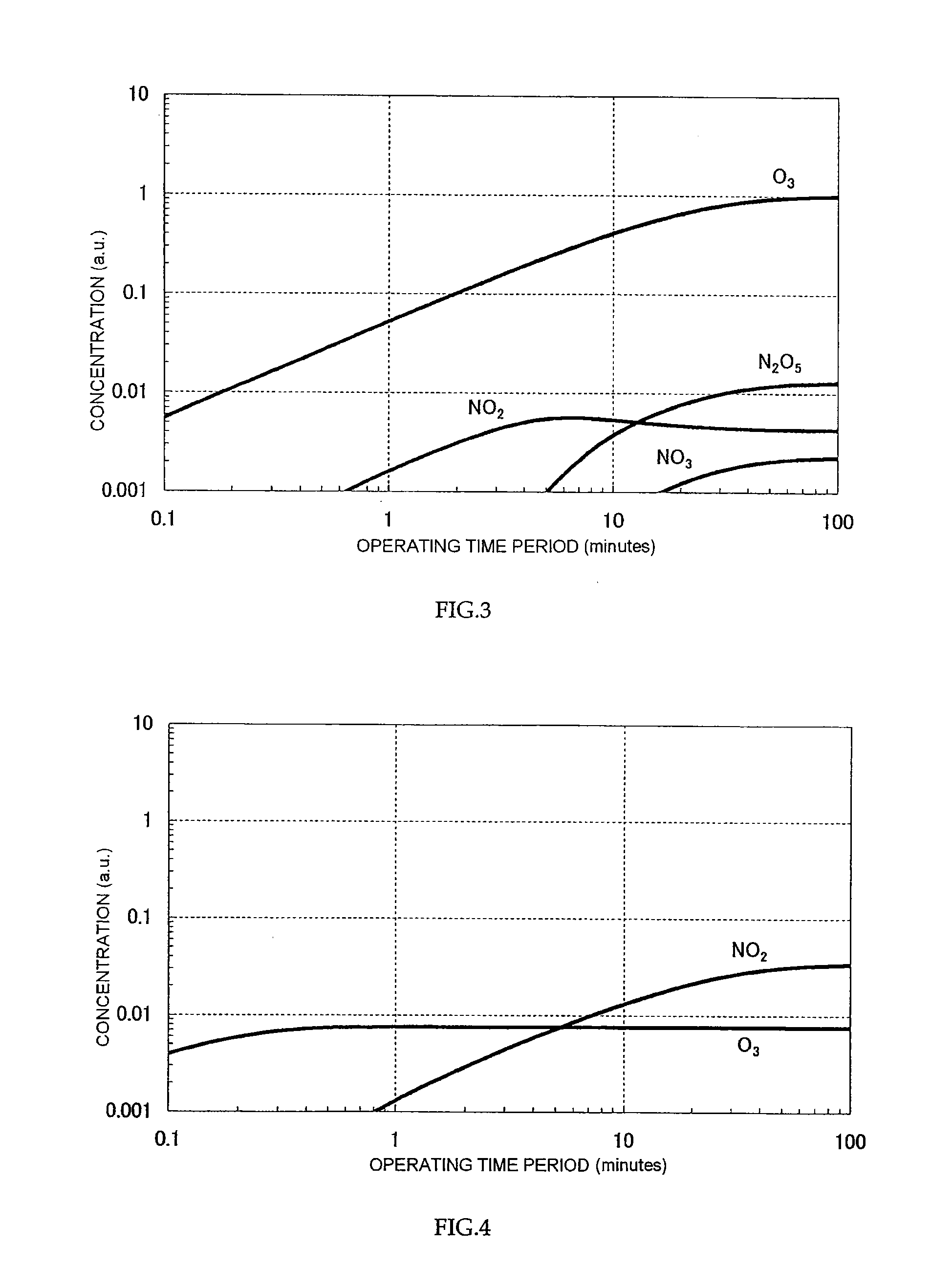Method and device for reducing concentrations of ozone and nitric acid generated in cooling air flowing through circulating airflow paths in rotary electric machines
- Summary
- Abstract
- Description
- Claims
- Application Information
AI Technical Summary
Benefits of technology
Problems solved by technology
Method used
Image
Examples
first embodiment
[0032]FIG. 1 is a cross-sectional view of an air-cooled turbine generator to which a method of this embodiment is applied.
[0033]In FIG. 1, the air-cooled turbine generator includes a frame 1, a rotor 2, a stator 3, a fan 5, an air cooler 6, an ozone decomposition unit 7, and bearings 8. In this air-cooled turbine generator, the rotor 2 having the fan 5 mounted thereto, the stator 3, the air cooler 6, and the ozone decomposition unit 7 are disposed in the frame 1 having a totally enclosed structure, and a rotation shaft of the rotor 2 is supported by the frame 1 with the bearings 8. In addition, a circulating airflow path 4 is formed so that cooling air sent by pressure from the fan 5 circulates around the rotor 2, the stator 3, the air cooler 6, the ozone decomposition unit 7, and the fan 5 in this order. Note that, in this air-cooled turbine generator, the ozone decomposition unit 7 is disposed on a downstream side of the air cooler 6, but the position of this ozone decomposition u...
second embodiment
[0058]FIG. 6 is a cross-sectional view of an air-cooled turbine generator to which a method of this embodiment is applied. Note that, the basic structure of the air-cooled turbine generator of this embodiment is the same as the structure of the air-cooled turbine generator of the first embodiment, and therefore the same parts are represented by the same reference numerals or symbols so that overlapping description is omitted.
[0059]In FIG. 6, the air-cooled turbine generator includes a light source 9 in the circulating airflow path 4.
[0060]In the air-cooled turbine generator of the first embodiment, the ozone decomposition unit 7 decomposes ozone produced in the cooling air flowing through the circulating airflow path 4, and hence the production of nitric acid can be suppressed. However, when a partial discharge occurs in the stator 3, a very small quantity of nitrogen trioxide (NO3) may be produced by the above-mentioned reaction (7) in a period until the cooling air exposed to the ...
third embodiment
[0065]FIG. 7 is a perspective view of the ozone decomposition unit and a nitric acid adsorption unit which are used for a method of this embodiment. In FIG. 7, the ozone decomposition unit 7 and a nitric acid adsorption unit 10 are disposed in parallel with respect to the flow of the cooling air (arrows).
[0066]In the first embodiment, production of nitric acid can be suppressed by decomposing ozone. Further, in the second embodiment, production of nitric acid can be suppressed by photodecomposition of NO3. However, when partial discharge occurs in humid air, a very small quantity of nitric acid may also be produced by the following reactions.
e+H2O→e+OH+H (12)
NO2+OH→HNO3 (13)
[0067]In other words, when the partial discharge occurs in humid cooling air, water molecules are dissociated by electron collision so that OH is produced . Then, OH is reacted with NO2 so that nitric acid is produced . The life of OH is very short, and the reaction (13) occurs only in the vicinity of a dischar...
PUM
| Property | Measurement | Unit |
|---|---|---|
| Fraction | aaaaa | aaaaa |
| Fraction | aaaaa | aaaaa |
| Wavelength | aaaaa | aaaaa |
Abstract
Description
Claims
Application Information
 Login to View More
Login to View More - R&D
- Intellectual Property
- Life Sciences
- Materials
- Tech Scout
- Unparalleled Data Quality
- Higher Quality Content
- 60% Fewer Hallucinations
Browse by: Latest US Patents, China's latest patents, Technical Efficacy Thesaurus, Application Domain, Technology Topic, Popular Technical Reports.
© 2025 PatSnap. All rights reserved.Legal|Privacy policy|Modern Slavery Act Transparency Statement|Sitemap|About US| Contact US: help@patsnap.com



